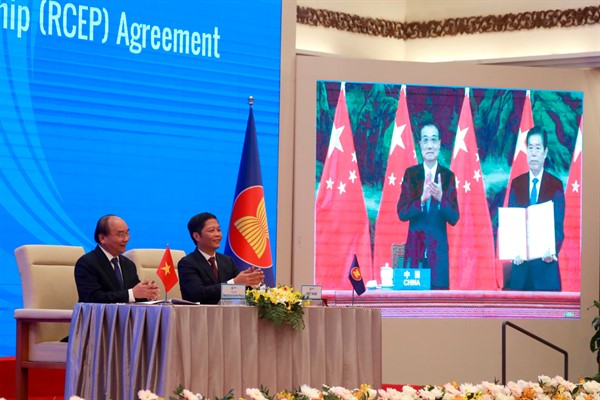Editor’s Note: Every Wednesday, WPR contributor Lavender Au and Newsletter and Engagement Editor Benjamin Wilhelm curate the week’s top news and expert analysis on China. Subscribers can adjust their newsletter settings to receive China Note by email every week.
Sealed at a virtual signing ceremony Sunday, the Regional Comprehensive Economic Partnership, now the world’s largest trading bloc, has been eight years in the making. It encompasses the 10 members of the Association of Southeast Asian Nations—Brunei, Cambodia, Indonesia, Laos, Malaysia, Myanmar, the Philippines, Singapore, Thailand and Vietnam—and five of their major trading partners, in Australia, China, Japan, New Zealand and South Korea. The economic zone it covers accounts for about 30 percent of both the world’s population and GDP. RCEP’s market size is five times that of the Comprehensive and Progressive Agreement for Trans-Pacific Partnership, the major Pacific Rim trade deal once known as the TPP that the U.S. backed out of under President Donald Trump, and almost double the CPTPP’s annual trade value and combined GDP.
The joint statement issued by the leaders formally signing RCEP called it “critical” for the response to the coronavirus pandemic in the Asia-Pacific and the “most ambitious free trade agreement initiated by ASEAN.” An HSBC report predicts that the 15 RCEP economies will account for 50 percent of global output by 2030.

